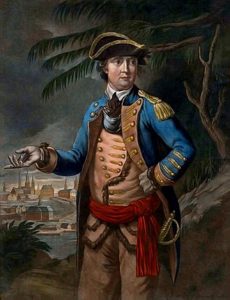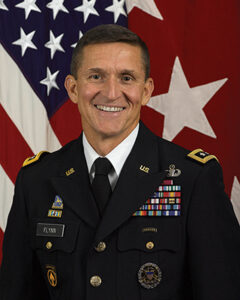While many people are focused on removing the statues of Confederate military leaders, it’s also an excellent time to ask why there are no statues of other traitors to the U.S., such as Benedict Arnold or the worst spy in modern history, Robert Hanssen.

Benedict Arnold, a confidant of George Washington, was an officer with the Americans. In 1781, in response to a reward, he offered to surrender the fort at West Point to the British. However, the plot was discovered, and Arnold escaped to England.
Hanssen was a Federal Bureau of Investigation (FBI) agent who spied for Soviet and Russian intelligence services against the United States from 1979 to 2001. Arrested in 2001, Hanssen met with his KGB handlers 20 times and handed over sensitive documents. His intelligence resulted in the deaths of people spying for the U.S. in the Soviet Union.
In a press release issued when he was arrested, the FBI said, “A detailed affidavit, filed in support of the criminal complaint and search warrants, provides a troubling account of how Hanssen first volunteered to furnish susceptible documents to KGB intelligence officers assigned to the Soviet embassy in Washington, D.C.
The affidavit chronicles Hanssen’s systematic transfer of highly classified national security and counterintelligence information in exchange for diamonds and cash worth more than $600,000. According to the affidavit, Hanssen’s activities also have links to other, earlier espionage and national security investigations, including the Aldrich Ames and Felix Bloch cases.
Why Have Statues Dedicated To Traitors?
Both of these men were classic traitors. They betrayed their country for money, and both had blood on their hands. However, on the positive side, there are no statues in public places to celebrate.
So the question is, why are there so many public statues of Confederate generals and political leaders scattered in the South?
Maybe it is because the rebellion of the Confederacy against the Union was painted as a states’ rights campaign. Then, it was re-labeled as the Lost Cause, whatever that means, by Confederate diehards in the late 1900s. Maybe it was because the Confederacy was anti-Black and represented a different sort of capitalism based on free human labor.
Whatever the cause, it’s not understandable why anyone would erect statues to traitors unless you sympathize with the Confederacy n the first place.
Back in the Confederacy
In the former Confederate states, which are also a bedrock of support for Trump, Lee is an unquestioned war hero and political leader. He is the proud symbol of the Confederacy and perhaps its best-known figure.
However, Robert E. Lee was a traitor to the U.S. As a top federal general at the start of the Civil War, on April 18, 1861, Lee was asked by Lincoln to command the US Army. Lee declined. As a loyal Virginian, he said: “I cannot raise my hand against my birthplace, home, my children.” AS historian James McPherson describes in The Battle Cry of Freedom, Lee’s decision to side with the South was not shared by other Union officers who were born or had affiliations with the Confederacy. McPherson writes that “scores of southern officers, however, like (Winfield) Scott, remained loyal to the nation rather than section (the Confederacy.)”
In short, Union officer Lee became a traitor to the established Federal government to which he had taken an oath.
Identifying a social and political thread still very evident today, McPherson writes that “The Upper South, like the lower, went to war to defend the freedom of white men to own slaves and to take them back into the territories as they saw fit, lest these white men be enslaved by Black Republicans who threatened to deprive them of these liberties.”
Whether it be white working-class men who embraced authoritarianism in 2020 or white men who owned slaves and went to war against the Union to defend the Confederacy’s version of “justice and liberty,” it looks like we are still fighting unresolved issues from the Civil War in 2020. The difference is that we have the additions of class friction, income inequality, globalism, technology, and social identity movements layered on top of the old race issue.

One way to fight Trump’s working-class authoritarian base is to offer a non-authoritarian, racially inclusive working-class solution that addresses 21st-century issues. People respond to following a positive vision that provides a more financially stable future.
However, that also means Trump supporters must acknowledge that their heroes, like Robert E. Lee, Benedict Arnold, Michael Flynn, Paul Manafort, Rudy Guilliani, and Robert Hanssen, are traitors to their best interests.











